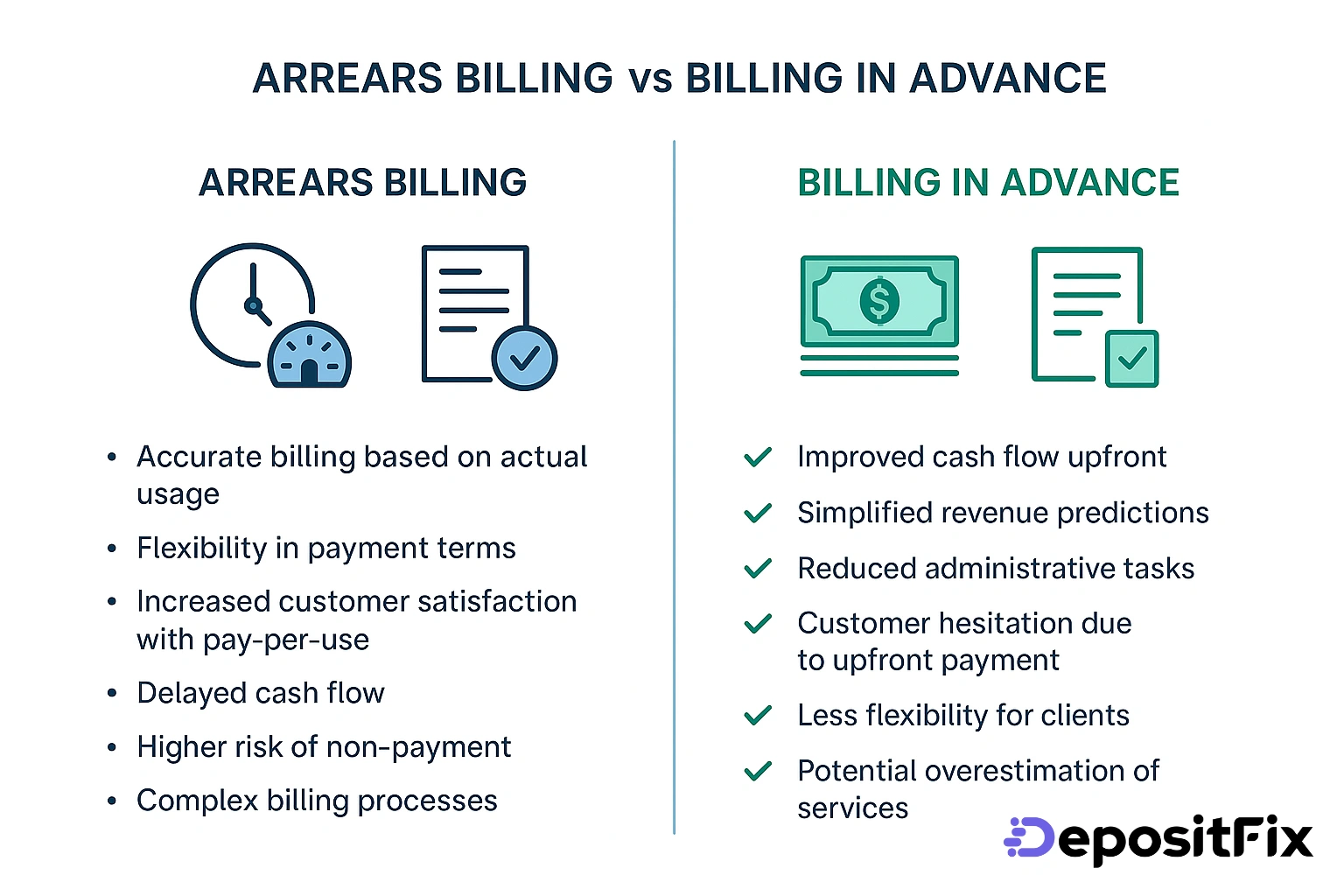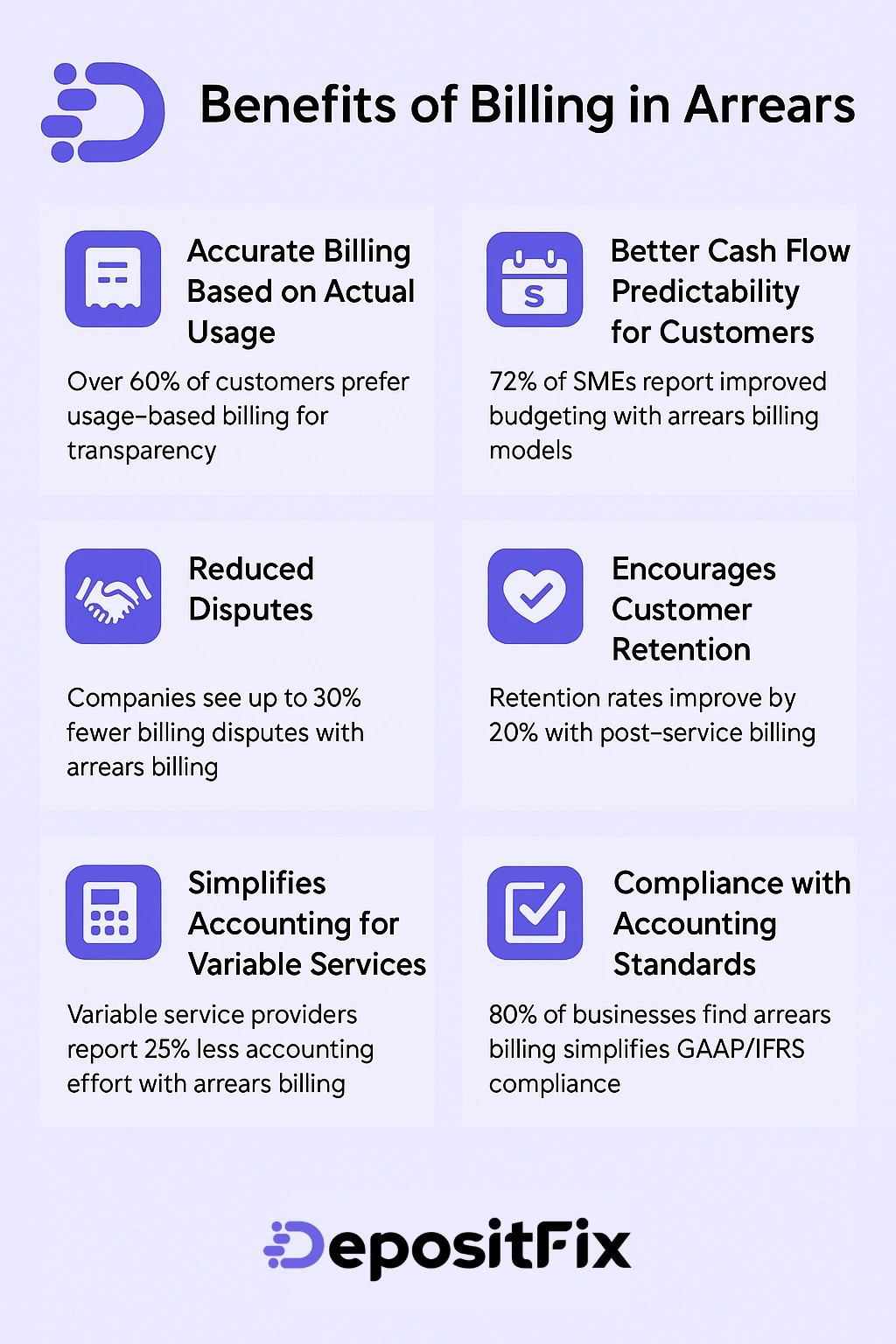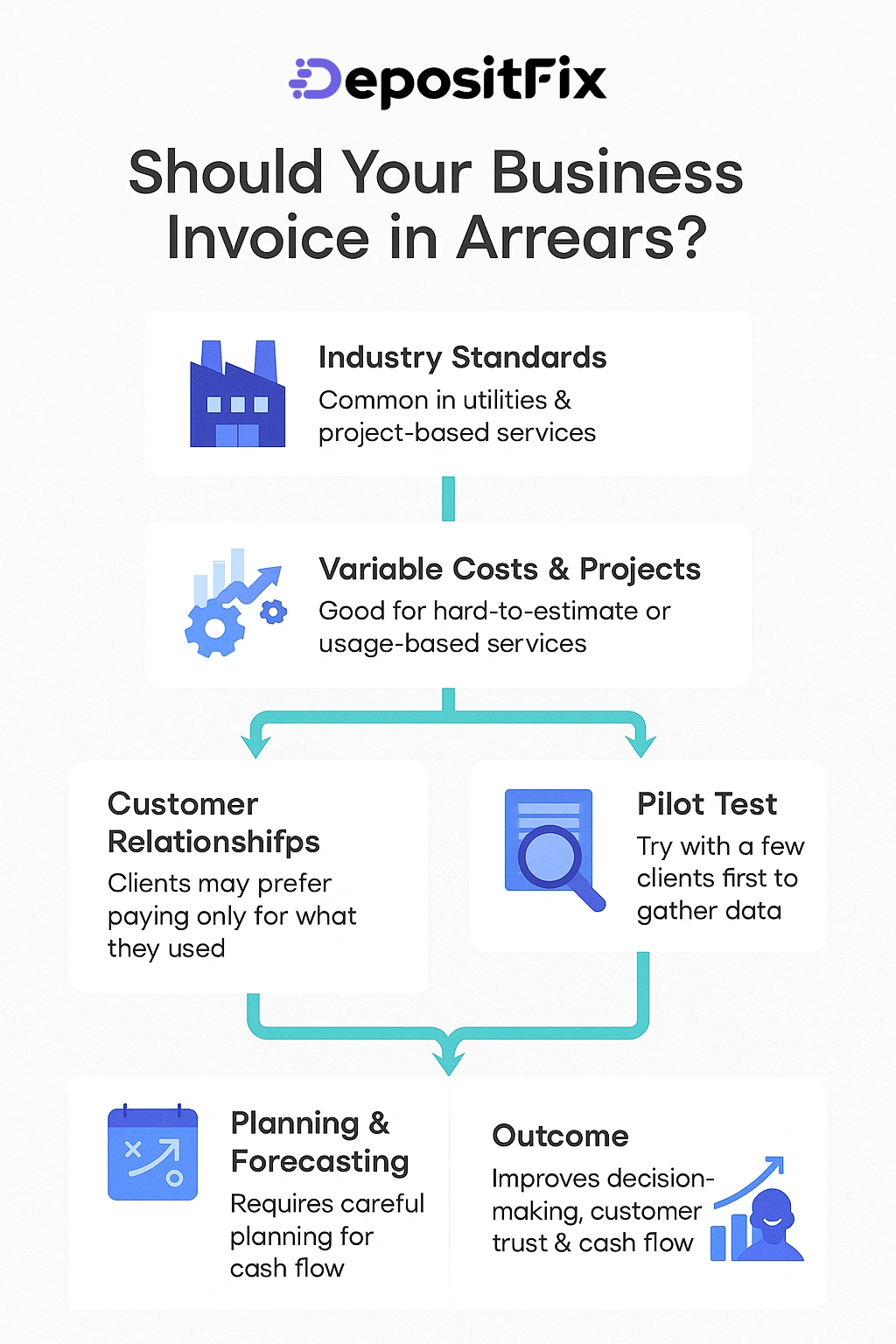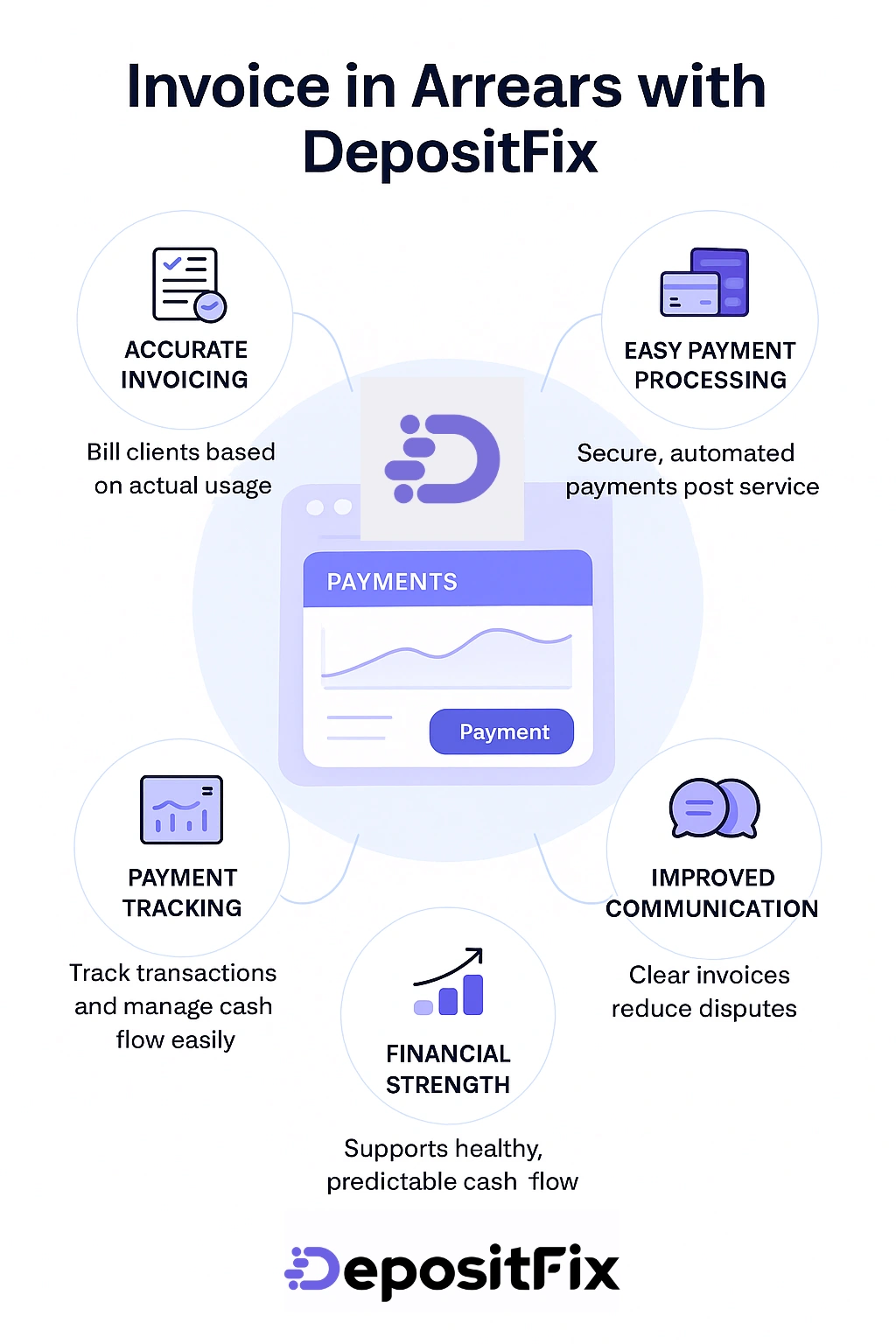An "invoice in arrears" is when you bill customers after you've done the work. This is a common way to handle payments in many industries. It means you get paid after you've provided the service, unlike paying upfront.
This method helps manage your cash flow better and keeps your accounts receivable in order.
An invoice in arrears is when you bill a customer after you've done the work. It's different from advance billing, where you ask for payment before you start. Post-service billing lets customers pay after they've used your services.
This method makes transactions smoother. Customers can see the value of what they got before paying. Arrears billing means any unpaid bills after a service is done. Knowing these terms helps with managing money well.
But, there can be problems if you don't keep good records or talk to customers clearly. This can lead to billing mistakes.
It's important to know the difference between arrears billing and billing in advance. Arrears billing means you charge customers after they get the service. This is good for things like utilities or freelance work because it's more accurate. The amount you charge can change based on how much is used, giving both you and your clients flexibility.
Billing in advance means you get paid before you do the work. This can help your cash flow but might scare off some customers because they have to pay first. Each way has its own good and bad points that businesses need to think about.
Look at these points to pick the best billing method for your business and your customers.

Arrears billing works well in many situations, especially for businesses with changing costs or project timelines. You should know when to use it to improve cash flow and customer happiness. This method is great for industries where the service given directly affects the bill.
For instance, utility companies often use arrears billing to match actual usage. Freelancers and contractors also find it helpful for charging based on completed work. This way, clients only pay for what they get, building trust and fairness.
Several industries are well-suited for arrears billing:
In these fields, arrears billing makes financial dealings clearer. Clients see their bills match the service they used, while businesses keep a steady cash flow and loyal customers.
Using arrears billing makes billing more accurate and strengthens client relationships in these areas. It ensures both sides benefit from this clear billing method.
Invoice in arrears is common in many sectors. It's used in construction and utilities, where payment comes after services are checked. This way, companies can charge only for what they've done, promoting honesty and clearness.
Freelancers also use arrears billing, especially for projects with changing hours or tasks. They bill after finishing work, making sure clients pay for what they got. This builds trust between freelancers and their clients.
Companies with subscriptions or regular services also bill in arrears. This lets them adjust payments based on how much is used.
Billing in arrears has many benefits. It makes financial operations match actual service use. This method improves invoice accuracy and helps manage cash flow better. Knowing these benefits can greatly improve your business's performance.
Billing in arrears allows for accurate invoicing. Customers get bills that show what they actually used. This ensures fair and clear charges.
This method reduces overbilling. It makes customers happier and more loyal to your business.
Billing in arrears helps customers predict their cash flow better. As they get used to paying for what they use, they can plan their budgets better. This helps both your business and your clients manage their finances effectively.
Clear invoicing from billing in arrears leads to fewer disputes. Customers only pay for what they've used, so there's less chance of disagreements. This makes your relationship with customers stronger and reduces financial stress.
Billing in arrears helps keep customers. It lets them try your service first, building trust and satisfaction. This makes them more likely to pay because they know the value.
This method is great for variable services. It means you bill for what's actually used, not guesses. This makes accounting clearer and helps manage money better.
Billing in arrears also helps follow accounting rules. It keeps financial records right and gives clients flexible payment choices. This keeps your business running smoothly, avoiding billing problems.

Billing in arrears has its benefits but also downsides. It's important for businesses to know the drawbacks before using it. Here are some challenges it poses.
One big issue with billing in arrears is delayed cash flow. Businesses that need money right away can struggle. This makes it hard to cover costs and plan for the future.
There's also a higher risk of not getting paid. Clients might forget or refuse to pay on time. This can hurt your business, especially if it happens often.
Billing in arrears makes accounting more complicated. It's hard to keep track of payments accurately. This can lead to mistakes and inefficiency in your billing system.
Arrears billing makes budgeting hard. Companies need cash right away to manage their finances well. Payments coming in at random times can mess up your budget. This makes it tough to plan and use resources wisely.
Arrears billing adds to the work load. It means more tracking and managing of customer accounts. This can increase costs and make your team work harder. It's especially tough for small businesses with fewer people.
Not all businesses do well with arrears billing. Some, like those needing cash fast, might not like it. Check if your business model fits this billing style. For example, subscription services might face more problems with it.
Deciding if invoicing in arrears is right depends on several factors. First, look at industry standards. Some sectors, like utilities or project-based services, often use this method. This is because their costs can change a lot.
If your business has variable costs or projects that are hard to estimate, billing in arrears could be good. It helps you charge based on actual use or work done.
Then, think about your customer relationships. How your clients see your billing can affect your choice. They might like paying for what they actually used, not just an estimate.
To make this work, you need to plan well and think ahead. It's not just about the numbers; it's about how your customers feel.
Try out this billing method with a few clients first. This will help you see if it works. You'll get data that can help you make better business decisions. It will also show how it affects customer happiness and your money flow.

To manage billing in arrears, you need specific strategies. These help keep your cash flow stable and reduce disputes. It's all about risk management in arrears billing.
Set clear payment terms. Check your customers' credit history to find reliable ones. This way, you can avoid financial risks. Clear payment expectations keep the good business relationship.
Send detailed invoices on time to avoid payment issues. Accurate and timely invoicing helps speed up payments. Use automated reminders to keep clients on track with payments.
Offer flexible payment plans to meet customer needs. For big projects, ask for deposits. This helps with cash flow and shows client commitment.
Act fast on overdue payments to keep cash flow healthy. Quick follow-ups make clients accountable. Setting credit limits protects your finances from big losses.
DepositFix is a great way to handle invoicing in arrears. It offers strong payment solutions that make invoicing easier. This means you get paid on time, even after you've provided the service.
DepositFix also makes tracking payments simple. It helps manage your cash flow better. You can create invoices that show exactly what customers used, reducing arguments and improving communication.
DepositFix makes billing in arrears better. It combines accurate invoicing, easy payment processing, and tracking. This helps your business stay financially strong and handle billing challenges well.

Arrears billing can be a big win for businesses that value accuracy and customer happiness. It lets you bill based on what customers actually use, giving you a clearer financial view. But, it's important to know the risks to see if it fits your business.
When choosing an invoicing method, think about what's best for your business. Arrears billing has its own set of challenges, but the benefits like better cash flow and fewer disputes can be worth it. With the right approach, these benefits can outweigh the difficulties.
Using best practices and tools like DepositFix can help you improve your billing strategy. This way, you can quickly adapt to your customers' changing needs. It helps keep your customers happy and your cash flow healthy.
Discover the hidden automation in your payment, billing and invoicing workflows. Talk to our experts for a free assement!
